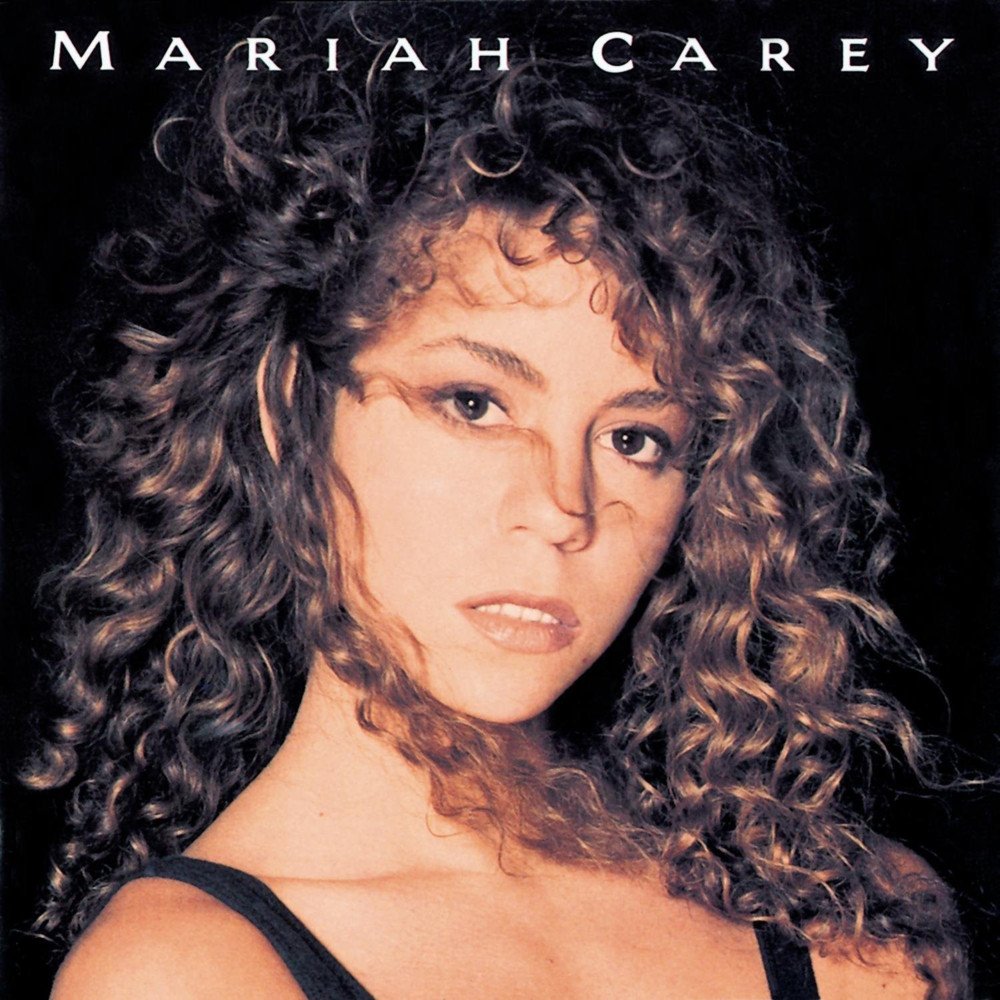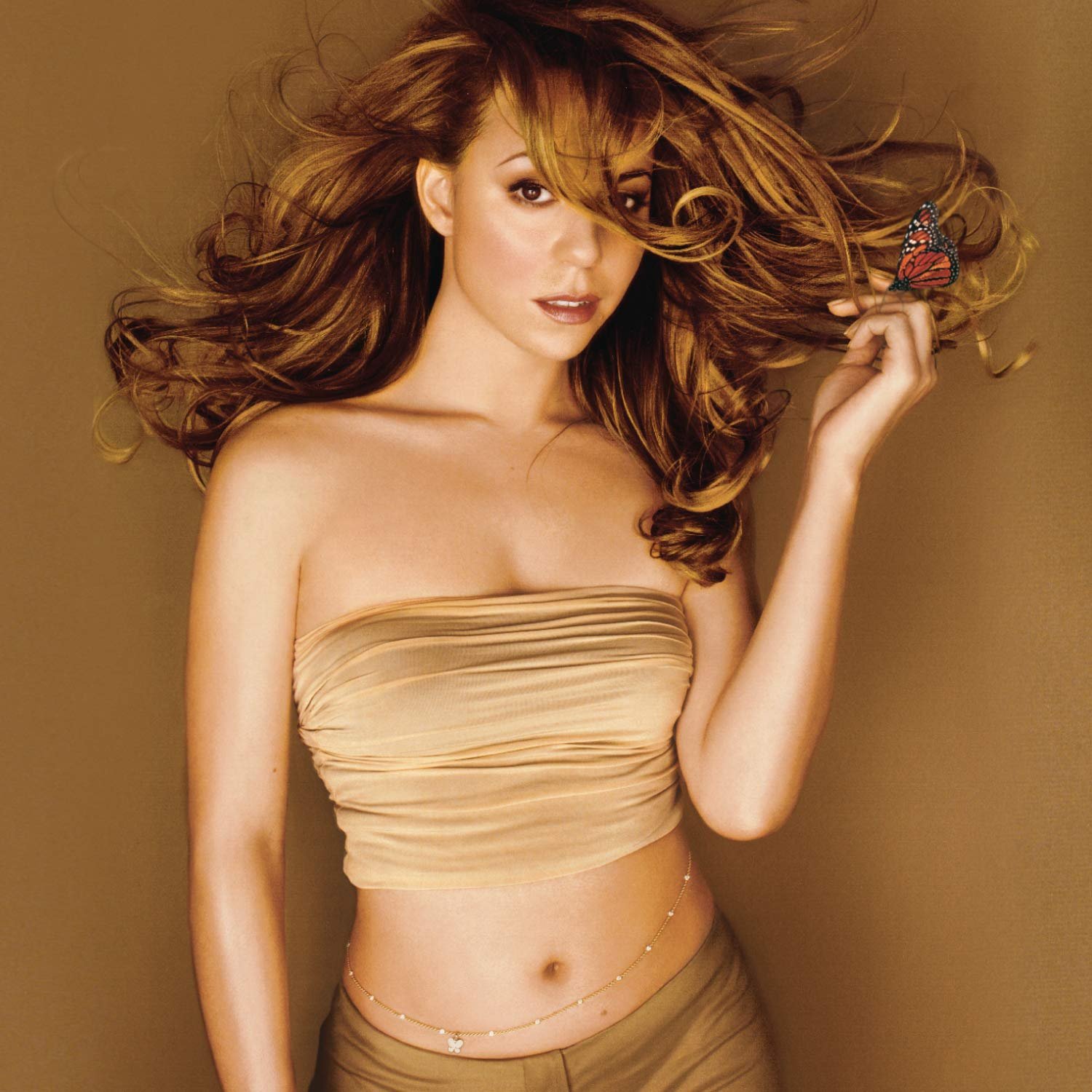Happy 30th Anniversary to Mariah Carey’s third studio album Music Box, originally released August 31, 1993.
Superstardom for Mariah Carey was always a mortal lock. Her combo of self-deprecating Long Island girl charm, unusually sharp skills as a songwriter, modelesque beauty, and a voice to die for guaranteed it. With her self-titled introductory LP she became an award-winning, international platinum-plaque collector in 1990. Radio couldn’t turn away from her songs, and she sang them as if she might never record again.
When she did, she put all five octaves into second release Emotions (1991), browning her gravy with gospel, blues, and jazz. While it delivered its share of chart-toppers, Columbia Records was disappointed with its triple-platinum initial showing. Its complement MTV Unplugged (1992) sold exceptionally well for a live EP, but still fell short of alpine expectations. Though most loved her work, some found fault with it.
Rather than marvel at her effortless whistle notes rarely heard since Minnie Riperton’s last recordings, Carey’s ability was dismissed as a “shtick” she relied upon. More staid, conservative listeners began to complain of oversinging, which is a coded protest. It meant that if Columbia wanted to reach their lofty sales goals, Carey would need to make her next batch of gravy—how shall we say?—less brown.
Though at odds with this directive, she found a way to meet the challenge and still preserve her integrity. Delaying a full splash into the depths of R&B, Carey delivered the flawless pop capitulation Music Box, a diamond-selling knockout that would dominate radio for years and endear her to fans for life.
Assisting her production and songwriting efforts are then-primary collaborator Walter Afanasieff and recent musical soulmates Robert Clivillés and David Cole. Among new accomplices were Kenny “Babyface” Edmonds and Daryl Simmons who had the Midas touch for accessible soul. Rounding out the bunch was Dave “Jam” Hall, fresh off of making Mary J. Blige’s 1992 debut What’s the 411? an instant classic.
Columbia head honcho Tommy Mottola was not only driving Carey to make Music Box a sales boon, he was also closing in on making the starlet his wife. Feeding the population’s obsession with celebrity and romance, Mottola and Carey married in an elaborate New York ceremony on June 5, 1993. The wedding coverage couldn’t have been better timed to coincide with Carey’s new single, the summery, supple “Dreamlover.”
Watch the Official Videos:
Warming its way open with sparkling chimes, Disney-idyllic strings, rousing organ, and Carey’s trademark pixie whistle, the booming track took the same sample of The Emotions from Big Daddy Kane’s “Ain’t No Half Steppin’” and drew hearts and flowers around it. With this fusion of pop, soul, and street, Carey’s teeth could at last crush into the forbidden fruit that is hip-hop.
Hip-hop—and the diligence to keep Carey away from it—was symbolic of what Columbia distanced Carey’s public from: the Black half of her biracial Irish and Afro-Venezuelan heritage. In the name of marketing, casual downplaying of her Blackness was so common that the image of an infantry of Black men executing carefree choreography in the “Dreamlover” video was both striking and, for me, joyous. With the sunny smash secure in its US pop #1 spot, it would linger there for eight weeks.
“I always resisted their push to make me fit in a neat, mainstream adult contemporary category,” she explains in The Meaning of Mariah Carey (2020). “They kept trying to smooth me out while I just wanted to get a little more rough … And of course, there was a racial and cultural dimension that came with integrating hip-hop. It was a Black artform. Unlike jazz (which Tommy appreciated) or gospel, hip-hop was radical, raw, and in your face. It was not designed to make middle-aged White men feel cool.”
Columbia was instead seeking the commercial gladiator “Hero.” It’s one of several in her catalog that became megahuge for such myriad reasons, they defy measure. Certified double-platinum, and like “Dreamlover,” also GRAMMY-nominated, it reached #1 on multiple charts in winter of 1993 and remained for weeks. Decades of replay have now branded its inspirational message into the fabric of culture.
For all the accolades this stunner earned, Carey wasn’t its biggest fan. She intended Gloria Estefan to record it for the 1992 film Hero starring Dustin Hoffman and Geena Davis. But when Mottola heard Carey’s demo, he quickly recognized what it could do for her stardom and demanded its inclusion on Music Box.
While “Hero” was still riding high in January 1994, she sent another pop power ballad to chase it up the charts, and “Without You” would not come down without a platinum certification in hand. As Céline Dion did with “All By Myself,” Carey’s soaring take on Harry Nilsson’s arrangement supplanted all previous as the definitive version. This satisfying exhibition of wallsliding heartbreak would become her first and surprisingly only #1 UK single, at least until the 2020 resurgence of “All I Want for Christmas Is You.”
Backing “Without You” in most territories was the R&B-lite “Never Forget You,” produced with Edmonds and Simmons. While it shares sonic commonalities to Boyz II Men’s “End of the Road,” it more importantly calls back to the soulful doo-wop of “Vision of Love.” Its kisses of synth bend like slide guitar giving a pseudo-country feel. Moreover, after the bridge, Carey lets loose with spine-tingling adlibs. For all the vocal restraint shown on the disc, the places where she breaks free utterly gleam.
Enjoying this article? Click/tap on the album covers to explore more about Mariah Carey:
Although last released from Music Box and only modestly charting, “Anytime You Need a Friend” is easily its best offering. Backed by the unified voices of Melonie Daniels, Cindy Mizelle, Shanrae Price, and her sister, future R&B star Kelly Price, Carey’s gospel consolations balance perfectly with Afanasieff’s sheen to let her natural passion shine through. Following it in the CD’s sequence in addition to serving as its B-side is the titular lullaby “Music Box.” Its childlike twinkle is a heartwarming thematic companion to “Anytime.”
Fans of “Hero” would be pleased to find extravagant romantic odes like “Just to Hold You Once Again” and “All I’ve Ever Wanted” filling out the tracklist. The former flies under the radar as a lyrical precursor to signature Butterfly hit “My All,” where the latter sounds like it should play over the closing credits of a blockbuster film. The European pressing included a warmer final track in the introspective, glimmering “Everything Fades Away.” While there isn’t a bad song or errant note anywhere on the disc, the barely cantilevered weight of so many adult contemporary ballads threatens to topple Music Box. Before it can, Clivillés and Cole swoop in and save the day.
After lighting up Emotions, Whitney Houston’s “I’m Every Woman,” Aretha Franklin’s “A Deeper Love,” and their own C&C Music Factory, they brought a crucial dance element to this era. Together, they wrap Carey in disco-house (“Now That I Know”) and calisthenic hip-pop (“I’ve Been Thinking About You”) fully baptizing Carey’s flat-ironed commitment to pop restraint until her natural curls come tumbling down. They provide just the punch to offset Music Box, but these two cuts only briefly preview that energy. It gets full reign on C&C’s remix of “Anytime You Need a Friend,” an 11-minute club workout where Carey can scat and squall sans fear of commercial disapproval.
In truth, critics were unusually severe in their assessments and seemed to eye Carey most valuably as a whipping boy. Snarky pundits seized upon Carey’s first tour, criticizing her nerves and stage inexperience. Stephen Holden of Rolling Stone dismissed her lyricism as “greeting-card sentiment.” David Brown of Entertainment Weekly had the temerity to declare Carey did not have soul—a claim that immediately calls into question both his definition of soul and capacity to feel it.
Regardless, buyers snapped up Music Box by the tens of millions. Ironically, this set of virginal pop led to Carey’s coronation as a Billboard dominatrix. It navigated heavy chart contention from Toni Braxton, Snoop Dogg, and others to reach #1 on US Pop and R&B album charts as well as over 15 countries worldwide. This cache earned Carey the right to lean more into her authentic self on Daydream (1995), again netting stratospheric sales, but it was the expert crafting of Music Box that whet appetites for this and subsequent wins.
The difference between Carey and so many of her contemporaries is her personal investment in these songs. The life experience connecting her to these verses and melodies informs each choice to ornament and flourish, or preserve and understate. It all communicates, and to millions, it resonates. To wit, even when tasked with holding her breath in service of the masses, Mariah Carey’s soul is irrepressible.
Want to learn more about Mariah Carey’s Music Box? Enjoy Mark Chappelle discussing the album at length during his recent guest appearance on the Catch That! podcast with The R&B Representers.
Listen:





